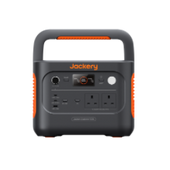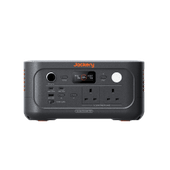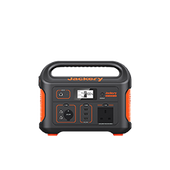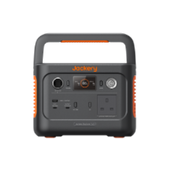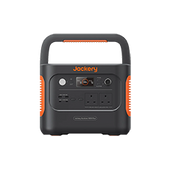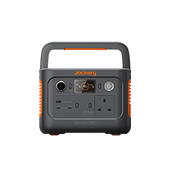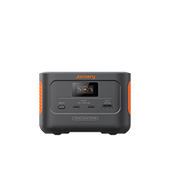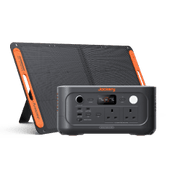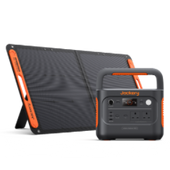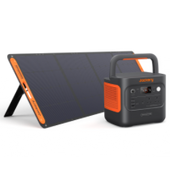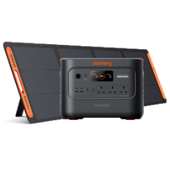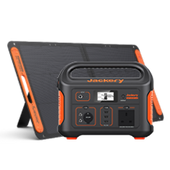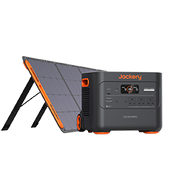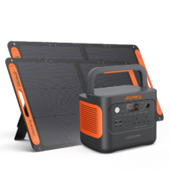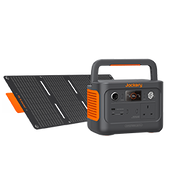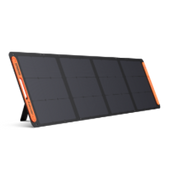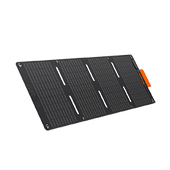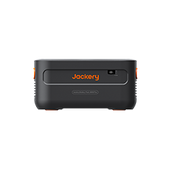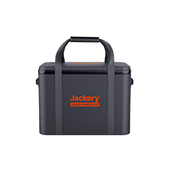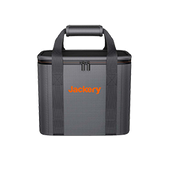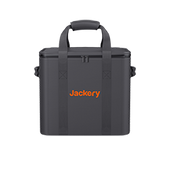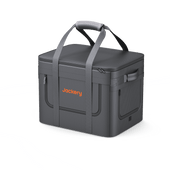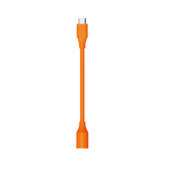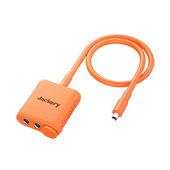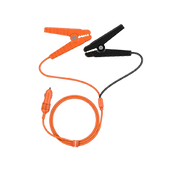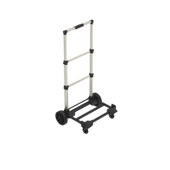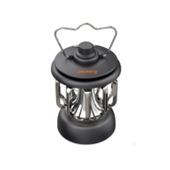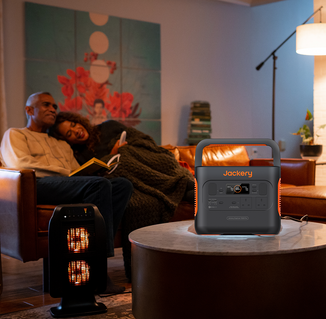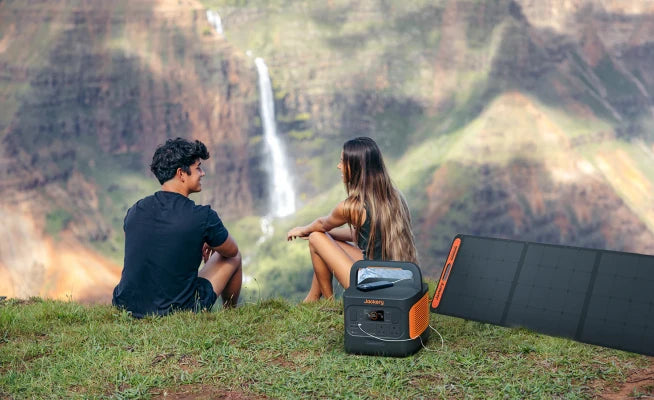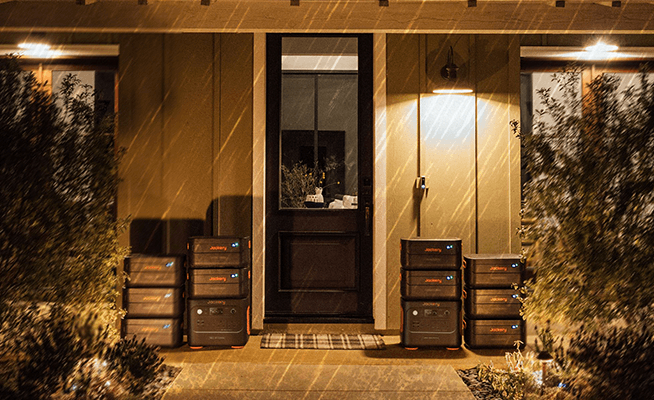Hiking gear is your most important partner when discovering new paths, but there is no one-size-fits-all answer. What backpackers pack significantly impacts their entire trekking experience, from how far they can hike to how safe and comfortable they feel.
Just like women's hiking gear, essential hiking gear for men includes a backpack, hiking shoes, a water bottle, navigation equipment, and a portable power bank. This guide contains recommendations for necessary hiking gear for men. The Jackery Explorer 240 v2 is ideal for hiking, navigation, photography, and staying connected to the outside world.
|
Key Takeaways: |
|
Essential Hiking Gear for Men
Hiking is a challenging and enjoyable outdoor activity, especially for male hikers. A safe and comfortable walk requires well-prepared equipment. A comprehensive, practical, and dependable hiking gear for men improves efficiency while also providing safety and emergency preparedness. The following hiking gear for men is suitable for most hiking situations:
Download the Hiking Gear for Men Checklist >>

Hiking Gear for Men: Backpack
A rucksack is a portable storage container that conveys your supplies while protecting you from the elements. When choosing a backpack, consider capacity, comfort, and functionality. Traditional backpacks are suitable for heavier loads (30-50 pounds) and longer trips, while ultralight backpacks are best suited for skilled hikers who need to carry only essential goods (10-25 pounds).
For optimal comfort, opt for a design with multiple compartments, including a water bottle holder, cover, mesh front panel, adjustable shoulder straps, and hip belt pockets. To keep water out, the backpack should be made of waterproof material or have a rain cover.
Hiking Gear for Men: Clothing
What you wear while hiking is directly related to body temperature regulation, comfort, and safety.
Hiking Shoes: We recommend professional hiking shoes with mid-high tops that are waterproof, non-slip, and provide ankle support. Avoid hiking in new shoes directly; be sure to break them in for at least 50 kilometres beforehand.
Hiking Socks: Choose merino wool or functional synthetic socks. They effectively wick away sweat, reduce friction, prevent blisters, and provide additional cushioning.
Wicking Underwear: Your base layer must be quick-drying and moisture-wicking. Avoid pure cotton in favour of polyester or merino wool; these will keep you dry and prevent hypothermia caused by evaporation.
Hiking Pants/Quick-Dry Pants: Opt for stretchy, quick-drying, and durable hiking pants or pants that can be easily detached into shorts. Avoid jeans, as they become heavy, difficult to dry, and restrict movement when wet.
Jacket: Opt for a GTX jacket or pants that are both rainproof and breathable, preferably featuring underarm zippers for added ventilation.
Hiking Gear for Men: Assistance and Navigation Equipment
This equipment enhances hikers' efficiency and ensures their safety in critical moments.
Hiking Poles: Highly recommended. They effectively distribute pressure on the knees and legs, especially when ascending or descending slopes, saving approximately 20% of energy and reducing impact on the knee joints. Carbon fibre is recommended.
Headlamp/Flashlight: Essential, even for day hikes. It can be life-saving in the event of delays, cave exploration, or unexpected nighttime travel. Ensure it's fully charged.
Navigation Tools: Mobile GPS and outdoor navigation apps are convenient, but it's essential to carry a paper map and compass as a backup and ensure you know how to use them.
Hiking Gear for Men: Food and Supplies
Maintaining energy and hydration is essential for completing a hike.
Water Bottle or Hydration Bag: It's recommended to carry at least 1.5-2 litres of water per day.
Water Purification Tablets or Water Filter: For longer hikes or in hot conditions, water purification tablets or a water filter can be used to replenish water from natural sources.
High-Energy Foods: such as energy bars, nuts, dried fruit, beef jerky, and sandwiches. Avoid overly greasy and heavy foods.
Hiking Gear for Men: Emergency Equipment and Practical Items
A comprehensive emergency kit and essential items are recommended for hiking to prepare for most emergencies.
First Aid Kit: A basic first aid kit should include Band-Aids, gauze, elastic bandages, tourniquets, iodine swabs, and allergy medication. Bring personal medicines based on your health, such as emergency medication for heart disease and asthma.
Trash Bags: Take any non-biodegradable trash collected during the hike with you and dispose of it at a centralised garbage disposal site.
Protective Equipment: Sun protection is crucial in high-altitude areas or during sunny weather. Bring sunscreen (SPF 50+), sunglasses (with UV protection), and mosquito repellent.
Fire Starter: A flint or waterproof matches help start a fire in an emergency, either for warmth or to call for help.
Multi-Purpose Knife: Lightweight and practical, it can be used for cutting, repairing equipment, and a variety of other tasks.
Electronics: Carry a portable power bank to ensure uninterrupted power for communication and positioning. Ideally, choose a solar-powered model (such as the Jackery Explorer 240 v2) to provide a constant supply of power during your hike.

The above hiking gear for men is for reference only. Please adjust your gear list flexibly according to your specific hiking route, season, and weather conditions. Also, remember to break in and test all new gear, especially hiking shoes, before a long hike.
Jackery Explorer 240 v2: One Essential Hiking Gear for Men
Electricity has become an essential resource for modern hiking. The battery life of electronic equipment, whether used for navigation, photography, route documentation, or simply staying connected, is directly linked to the safety and comfort of the hiking experience.
Modern outdoor adventures and avid hikers require a portable power supply that is lightweight, durable, efficient, and dependable. Jackery Portable Power Station is appropriate for these requirements, making it an essential component of hiking gear for men.
The Jackery Explorer 240 v2 is a precise, portable power supply. While it may not be a universal solution, it is highly recommended as an outdoor device for male hiking enthusiasts, first-time campers, or those seeking a portable power source that prioritises mobility, safety, and eco-friendly charging.

Here are the key highlights of the Jackery Explorer 240 v2 as a piece of hiking gear for men:
Large 256Wh Capacity Meets the Power Needs of Multiple Devices
The Jackery Explorer 240 v2 features a 256Wh LiFePO4 battery, which can charge a smartphone (29W) approximately 11 times, a camera (10W) around 10 times, and a lightweight drone (90W) about 4.5 times. Hikers carrying various equipment, such as a GPS, headlamp, walkie-talkie, and camera, can efficiently extend their outdoor activities while eliminating power concerns.
Lightweight and Portable, Optimised for Hiking
The Jackery Explorer 240 v2 weighs only 7.94 Ibs and is compact (9.1 x 6.0 x 6.6 in). Its ergonomic handle design makes it easy to stow in a backpack's side pocket or top storage area. Its compact cube-shaped design makes it easy to attach to a backpack without taking up too much space, making it an ideal choice for long hikes, camping, and mountain trekking.
Multiple Output Ports for Wide Compatibility
The Jackery Explorer 240 v2 has one AC outlet (rated at 300W), one USB-A port (15W max, 5V⎓3A), and two USB-C ports. It works with a wide range of devices, including smartphones and tablets, cameras, small electric mugs, and portable projectors. It can charge up to five devices at once, letting you consume your favourite material swiftly and effectively.
Solar Charging Support for Energy Independence
The Jackery Explorer 240 v2 supports outdoor charging with Jackery SolarSaga series solar panels (SolarSaga 40W/100W/200W). A full charge takes as little as 3.3 hours, providing access to clean energy anytime, anywhere. During daytime hikes, the solar panels can be unfolded and exposed to the sun, allowing you to charge while walking. This truly sustainable energy use is ideal for multi-day hikes or in off-grid areas, such as wilderness and high-altitude camps.
Safe and Reliable, Adaptable to Challenging Environments
The Jackery Explorer 240 v2 upgrades from NCM batteries to LFP batteries for enhanced safety, boasting an impressive 3,000 cycles and a lifespan of up to 10 years. Furthermore, with IEC 62040 shock resistance certification and upgraded ChargeShield 2.0, it ensures top-tier safety and reliability. It also meets stringent EMC Class B standards, providing smooth and undisturbed operation of your home appliances.
Quiet Operation, No Disruption to Nature
The Jackery Explorer 240 v2's fanless design enables near-silent operation (at just 42 decibels), providing peace of mind during hikes and making it ideal for those who enjoy immersive nature experiences. Furthermore, its zero-emission, smoke-free design makes it a perfect choice for eco-conscious outdoor adventurers.
|
Jackery Explorer 240 v2 Running Time |
|
|
Phone (29W) |
11 Times |
|
Light (5W) |
21 Hrs |
|
Camera (10W) |
10 Times |
|
Bluetooth Speaker (10W) |
17 Times |
|
Portable Fridge (60W) |
4 Hrs |
(*The running time is only for reference; the actual working hours are based on actual usage.)
Hiking Gear for Men in Different Scenarios
Proper equipment is essential for ensuring safety and enhancing your trekking experience in various conditions. The following are recommended hiking gear items for men based on three typical scenarios: cold weather, heavy rain, and multi-day hikes.

Hiking Gear for Men in Cold Weather
In addition to basic hiking gear, hiking in cold weather (such as winter, high altitude, and snowy conditions) requires a range of gear specifically designed for cold weather, warmth, slip resistance, and emergency response, especially for harsh conditions like low temperatures, wind, snow, and dampness.
Clothing: Use a classic three-layer approach. Ensure your base layer is quick-drying and breathable to keep you cool and dry. Choose a fleece or down jacket for warmth in your mid-layer, and opt for a windproof jacket or softshell for added wind protection.
Footwear: Opt for high-top snow boots specifically designed for extreme cold, paired with wool socks for added warmth.
Other Warmth: Bring a warm hat and gloves to prevent heat loss from your head and hands.
Snow Gaiters: Keep snow and mud out of your shoes and keep your feet dry.
Crampons: Metal claws attached to hiking boots to prevent slipping on ice or hard snow.
Life Blankets: Reflect body heat to prevent hypothermia, and are lightweight and easy to carry.
|
Cold-Weather Hiking Gear for Men |
|
|
Merino wool underwear High-loft down jacket or padded jacket Hardshell jacket and pants High-top hiking boots Wool socks Fleece hat or cap Windproof gloves Windproof face mask/bandana Sunglasses/snow goggles Snow boots Crampons |
Trekking poles GPS device Offline map Survival blanket Emergency whistle Headlamp First aid kit Satellite communicator Portable power bank Drinking water High-calorie foods |
Hiking Gear for Men in Heavy Rain
In addition to the standard essentials, men hiking in heavy rain need to prioritise waterproofing, safety, comfort, and emergency preparedness.
Microfiber Towel: Quickly dry your body and hair to prevent catching a cold.
Waterproof Bag: Store essential items, such as your phone and clothing, in a waterproof bag to keep them dry and protected.
Rain Poncho: While hiking in heavy rain is recommended, a rain poncho can help you reach shelter if a sudden downpour occurs.
Rain Skirt: Suitable for cycling or backpacking, it prevents water from seeping in through the hem.
Hiking Shoes: Opt for waterproof models (such as those with GTX liners) featuring deep, treaded soles for non-slip comfort.
Raincoat: Ultralight, disposable raincoats are a good emergency backup, but they're not recommended for long-term use.
Cold-Relief Drinks: Bring individually packaged ginger tea bags or hot chocolate to brew at camp or during breaks to help ward off the cold.
|
Heavy Rain Hiking Gear for Men |
|
|
Waterproof jacket and pants Moisture-wicking socks Waterproof hiking shoes Microfiber towel Rain skirt Waterproof backpack Offline map Paper map Power bank |
Hiking poles Headlamp or high-power flashlight First aid kit Survival blanket Water purification tablets Cold-weather drink Waterproof bag Disposable raincoat |
Multi-Day Hiking Gear for Men
After completing basic hiking gear, multi-day hikes (such as camping hikes lasting more than three days) are more challenging outdoor activities, involving camping, managing complex weather conditions, allocating energy, and ensuring safety margins. Therefore, in addition to lightweight basic gear, you'll also need key overnight survival gear.
Tent: Choose a lightweight tent with double-silicone fabric and aluminium alloy poles, rated for wind resistance of 8 and weighing less than 2kg.
Sleeping Bag: A goose down bag with a fill weight of at least 800 FP is recommended, and the temperature gauge should be at least 5°C below the expected minimum temperature.
Moisture-Proof Mat: An inflatable mat with an R-value of 2.5 or higher effectively insulates against ground chill.
Food: Dehydrated rice, instant noodles, energy bars, electrolyte supplements, etc.
Cooking Utensils: A stove, gas canister, folding pot, lightweight tableware, etc.
|
Multi-Day Hiking Gear for Men |
|
|
60–70L backpack Tent Sleeping bag Damp-proof mat Stove Gas canister Folding pot Lightweight cutlery Headlamp Power bank |
Hiking poles GPS device Offline and paper maps Personal locator beacon (PLB) First aid kit Survival blanket Water purification tablets or a portable water filter Waterproof matches or flint |
How to Find the Best Hiking Gear for Men?
Finding the correct hiking gear for men is similar to designing a hiking route; a good technique can help you achieve twice the results with half the effort. Consider your specific hiking requirements, equipment performance, and purchasing channels to help you choose hiking gear efficiently and accurately.

Tip 1: Identify Your Hiking Type
Gear requirements vary significantly depending on the type of hiking you do. First, define your activity scenario.
Lightweight Hiking: Single-day trips, established routes, and light loads. A backpack of approximately 35L is recommended, along with lightweight, quick-drying clothing and low-top hiking shoes. A tent or sleeping bag is generally not necessary.
Heavyweight Hiking: Multi-day excursions, backcountry camping, and hefty loads. Your gear should be durable and warm, including thick hiking boots, down sleeping bags, windproof and waterproof jackets, and large-capacity backpacks (50L or larger).
Tip 2: Read Professional Reviews
Follow professional outdoor gear review sites such as Gear Patrol and Unearth the Voyage. They offer in-depth product research and comparisons, with an emphasis on actual outdoor testing performance, durability, extreme weather compatibility, and value for money. You can also consult outdoor forums or communities to find long-term reviews of specific hiking gear from local users. Alternatively, you can review a variety of real-world user experiences on e-commerce sites like Amazon, paying special attention to reviews that match your body shape and usage conditions.
Tip 3: Compare and Try on Multiple Platforms
Brand websites typically offer a full range of styles and sizes, but discounts are rare. E-commerce platforms like Amazon UK often offer promotions, which may be suitable for those who aren't looking for extreme performance. Visit chain outdoor stores like Cotswold Outdoor, Ellis Brigham, and GO Outdoors to try out different brands of shoes and backpacks in person and consult with experienced staff.
Tip 4: Set a Budget
It is recommended that you prioritise your budget for hiking shoes and backpacks, as they have the most significant impact on comfort and safety. Clothing can be updated over time. Furthermore, many outdoor brand websites and large stores routinely offer end-of-season bargains or member-only discounts, so keep an eye out for better deals on your desired gear. Second-hand marketplaces such as eBay, Gumtree, and Facebook Marketplace are also good places to look for low-cost, unused gear.
Tips for Organising and Packing Hiking Gear for Men
When carrying hiking gear for men, especially on multi-day, heavily loaded trips, proper organisation and packing are essential not just for comfort but also for safety. Here are some tips for organising and packing hiking gear for men:

Tip 1: Make a Gear List
Before packing, create a categorised list of all your gear. You can organise it by sleeping system, kitchen system, clothing system, personal items, emergency items, and tools. This ensures nothing is left out and increases packing efficiency.
Tip 2: Pack in Layers
Imagine your backpack as divided vertically into three sections: bottom, middle, and top. The bottom section holds less frequently used gear and items, such as a sleeping bag, sleeping pad, and spare clothing. The middle section holds food, a stove, and a tent. The top section holds emergency or frequently used items, such as a first aid kit, headlamp, maps, and portable power bank. If your backpack has side pockets, these can be used for water bottles, snacks, and trekking poles.
Tip 3: Use Compression Bags and Fill Gaps
Use compression bags to compress your sleeping bag, down jacket, and spare clothing to their minimum size. Stuff small items, such as socks and stove burners, into the gaps between cookware and shoes to maximise space.
Tip 4: Seal Away Special Gear and Items
Even if your backpack has a rain cover, it's recommended to use waterproof bags to seal electronics and food, preventing rain and moisture from entering. Additionally, use waterproof storage bags of different colours or sizes to distinguish different types of gear (e.g., cooking kit, clothing kit, electronics kit) for easy identification.
Tip 5: Final Inspection
After packing, put your backpack on and secure all fasteners (sternum strap, hip belt). Ensure the backpack is upright and stable, and that all necessary items (such as a headlamp and map) are within easy reach. Of course, the most important thing is to ensure you're carrying the right amount of weight. It's recommended that you don't exceed one-third of your body weight to avoid long-term damage to your knees and lumbar spine.
FAQs
The following are the frequently asked questions about hiking gear for men:
1. What should guys wear on a hike?
Men should wear moisture-wicking pants, a waterproof and breathable jacket, and quick-dry hiking pants. If the weather is cold, add a midlayer and a fleece jacket or jumper to stay warm. Wear supportive, durable hiking footwear with high traction, as well as long-lasting, non-abrasive socks. A brimmed hat protects your head from the sun and rain, while a fleece-lined hat keeps your head warm in chilly weather.
2. What gear should I get for hiking?
Hiking requires a sturdy backpack, comfortable shoes, and layered gear suitable for all weather conditions. Additionally, pack navigation tools, sunscreen, a first-aid kit, a flashlight, food, and water. Here's a basic hiking equipment list for your reference:
|
Basic Hiking Equipment List |
|
|
Backpack Hiking boots Moisture-wicking, quick-drying base layer Wool sweater or down jacket Warm jacket Quick-dry pants Sunglasses Hat Drinking water High-energy snacks Water purification tablets or filter (if needed) |
Hiking poles GPS device Paper or offline map First aid kit Headlamp or flashlight Sunscreen Swiss Army knife Emergency blanket Matches or lighter Portable power bank |
3. What are the 10 essentials for a hike?
According to The Guardian, the top ten essential hiking gear items include a waterproof jacket, a thermos bottle, a merino wool base layer, waterproof trousers, a neck warmer, a backpack, hiking socks, a power bank, a navigation device, and a rain poncho.
4. What is the 3-layer rule for hiking?
The three-layer rule for hiking involves wearing a moisture-wicking base layer, a warm midlayer, and a weatherproof outer layer. The benefit of this approach is that you can add or remove layers to stay dry and comfortable depending on the weather.
Base layer: A moisture-wicking synthetic or merino wool T-shirt and long base layer.
Mid layer: A fleece jacket, down or synthetic-filled coat, or a warm sweater. This layer may not be necessary in warmer weather.
Outer layer: A waterproof or water-resistant windproof jacket.
Final Thoughts
Choosing the right hiking gear can significantly impact the success and safety of your trip. Several factors, such as temperature, topography, and the length and duration of your excursion, may influence your hiking gear needs.
This article not only recommends hiking gear suitable for most conditions for men, but also examines supplemental equipment for cold weather, heavy rain, and multi-day trips. Furthermore, maintaining enough power throughout the walk is essential for a stress-free experience. The Jackery portable power bank charges your navigation and communication gadgets while also being lightweight and portable, making it the ideal hiking gear for men.

